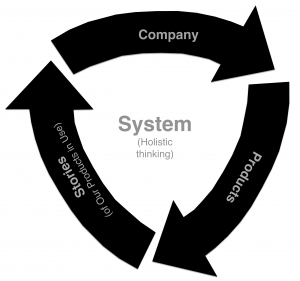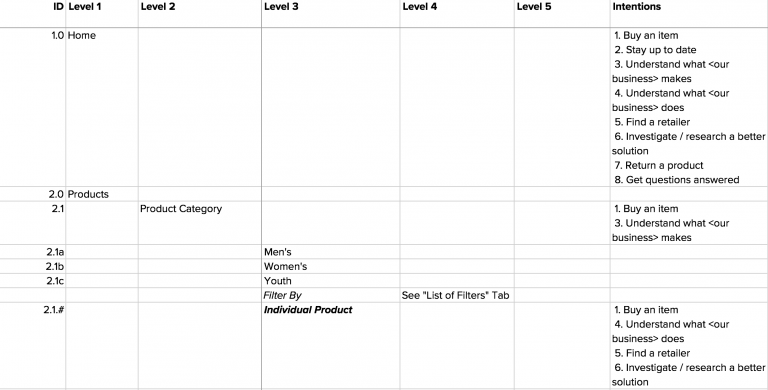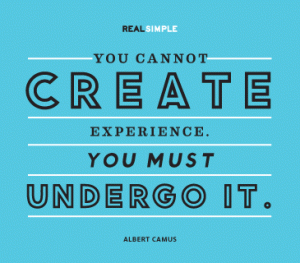Why Designing for Customer Intentions is the Future of Business

Summary: Customers pay attention in many different ways, and it is up to them how they use said attention. Businesses need to cater to this fact or else suffer the consequences.
In the first post of this series on Designing for Intention, I introduced the need for businesses to change the way they decide on, and structure, the information they include on their websites, apps, and digital products. (It should be noted that deciding on information and communication for ANY product or service should tie back to customer intentions, but for the purposes of this discussion we’ll focus on the digital realm.)
I also stated that currently too many businesses, when including information in their digital mediums, only house information and content their business needs and wants, instead of showcasing more information which aligns their business values and their customers’ intentions for conducting business with them in the first place.
Said more simply. Businesses talk far too much about themselves instead of focusing on helping customer reach their goals.
One topic I introduced, but didn’t delve deeply into, was my thoughts and evidence around WHY I claim businesses need to make a change and design their information for customer intentions. In this piece, I aim to do just that.
We start the argument with a discussion on customer attention. An arena all businesses, especially those who either sell their products digitally (i.e. selling physical products through a website) or who sell digital products (i.e. selling a subscription to an application), compete in is that of earning and securing customer attention.
Customer attention, more generally human attention, is a tricky thing. We often think of it as two dimensional; either you have someone’s attention or you don’t. But, there are more than two modes of customer attention businesses need take into account when considering their customers.
I’ll provide a quick synopsis here:
One scale of attention is that of voluntary versus captive attention.1 Voluntary attention is the type a person pays to things they “find innately interesting. These are items you’d focus on even if explicitly forbidden.” On the other hand, captive attention “is thrust upon you”.
A second scale of attention is that of aversive versus attractive attention. People pay aversive attention to items to “avoid negative consequences”. They pay attractive attention to items because they believe whatever they are paying attention to may bring on positive experiences.
A third scale of attention is that of front-of-mind versus back-of-mind attention. Front-of-mind attention is conscious, focused, and explicit. People use this type of attention to write reports, pay taxes, and have a conversation. Back-of-mind attention is tied to “things that may never come into your conscious awareness unless something unexpected appears”. People use this type of attention when driving but paying more attention to a side conversation instead.
Hopefully you can see that when a customer is using your website, application, or other product, they could be applying, or not applying, any of these types of attention. Couple these dynamics with that of human brain function, and you’ll see there’s a lot more going on in the head of your customer than you may be giving credit for.
In a recent article2 aimed at discussing, and disproving, the myth that customer attention spans are decreasing given the increase of technology, several quotes showcase this human brain function piece.
First is this one by Dr. Briggs, “How we apply our attention to different tasks depends very much about what the individual brings to that situation”.
Meaning, your customer may come to your website one day with a certain set of life experiences behind them (maybe it was a calm day), and then arrive the next with a completely different set (maybe they arrived stressed from a long day at work and home). You can imagine that what kind of attention they pay to your information will depend greatly on these experiences.
Another quote takes this a step further; “We’ve got a wealth of information in our heads about what normally happens in given situations, what we can expect. And those expectations and our experience directly mould what we see and how we process information in any given time.”
This means that not only are there different types of attention customers pay, and not only does their environment influence how they use these types of attention when interacting with your information, but their human brain also has a great deal of preconceived notions about how certain information and products/website should work. So, in addition to all the aforementioned points, your customers are also applying their preconceived notions to how they pay attention to your information.
As you can see, it’s not simply about putting your information out on your website, application, or product and customers understanding it. The equation is much more complex due to all the dynamics at play. To make matters even harder on you, there is one final factor to consider; maybe the most important factor.
Your customer is the one in the driver’s seat determining when and how to use their attention.
That’s right, it’s your customer’s decision, not your’s. And, your customer will make this decision based off all of the previously discussed factors, and then will pay attention only to what they want or need from your business. If they don’t see something that they want or need in the moment this decision is taking place, they will go elsewhere.
It’s that simple.
We see customers going their own way with business content all the time3. Whether in doctors’ offices or when using websites, customers make the call that benefits them.
Therefore, your business’s philosophy for deciding on and structuring the information you communicate needs to take all of these factors (types of attention, environmental influences, biological functions, etc) into account then design its information for these factors to be successful.
This is what designing your information for customer intentions does.
It’s a process for determining and communicating information that first meets customer needs, and then aligns the information to showcase your unique business values. Following this process ensures your content is captivating, attractive, and front—of-mind.
These are the qualities of customer attention you want to trigger, and you don’t do so by meeting your needs, you do so by meeting theirs.
What’s the bottom line then for you and your business?
If your business chooses not to go the route of determining and designing information for customer intentions, you will continue to overload your customers, and they will choose to go elsewhere to get their needs met.
We need no further evidence than these cases to prove my point:
- Evolve or Die
- 50 Examples of Corporations that Failed to Innovate and Missed Their Chance
- How MySpace Fell Apart
If your aim is for your business to be successful and survive in this digital world, you need to secure customer attention. Updating how you choose and design information from focusing on you to focusing on your customers is the key to earning this attention.
By considering then designing for customer intentions, you move from yelling information about your business at your customers to having a conversation that satisfies their needs and meets yours. Not only is this more morally sound, but it’s a foolproof way to secure happy customers who keep returning to your business to get their needs met.
The best part is all making this change requires is you putting your business ego aside and bringing your customer’s views to the forefront.
Surely the ends, a successful, long-term business, justify those means.
- Davenport T. & Beck J. (2001). The Attention Economy: Understanding the New Currency of Business.
- Maybin, S. (2017, March 10). Busting the attention span myth. Retrieved from – https://www.bbc.com/news/health-38896790
- Somerville, A. (2018, April 28). Wandering off the desire path. Retrieved from https://medium.com/@acuity_design/wandering-off-the-desire-path-8efbd9bbfedb


















